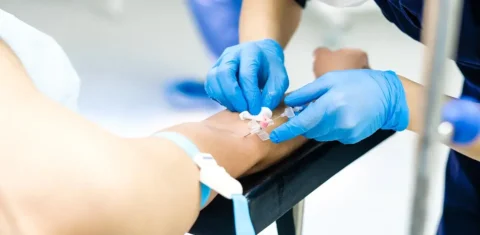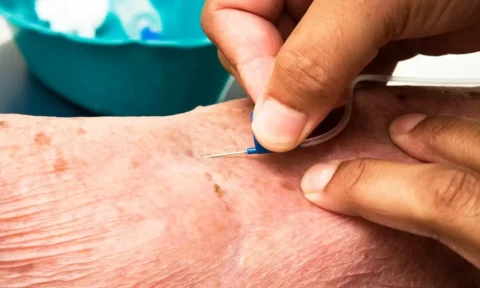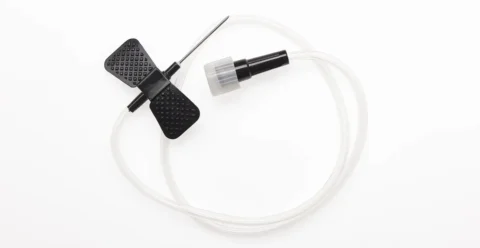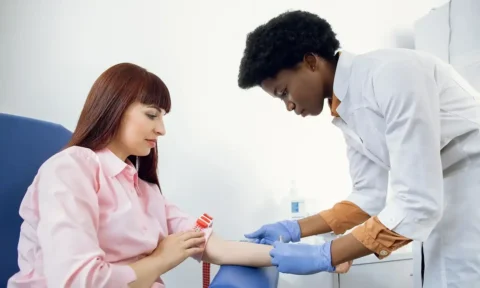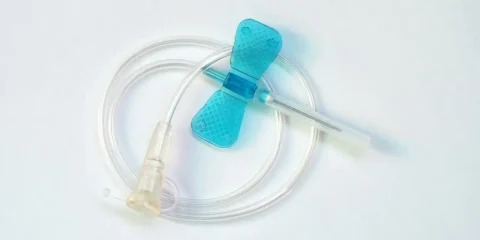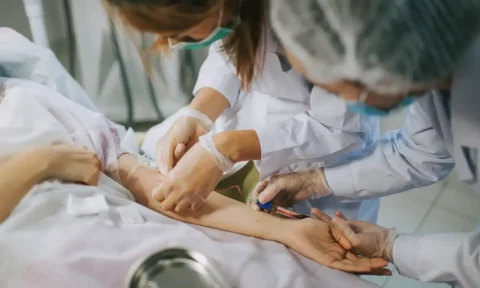A butterfly needle is a single-use needle used for venipuncture which has a short length and can be used on adult patients. The wings on each side of its hub are designed to make it easier to thread through the skin with less force than other needles. It also has a short length of tubing attached to it, which allows for rapid infusion or aspiration of blood samples without having to remove or reinsert the needle from an accessible vein after each use.
So when was the butterfly needle created? This type of needle first came to use in the 20th century. It was created to help extract blood without inflicting too much pain on the patient. It was an innovation that helped many health practitioners and patients in different medical procedures on top of the traditional straight needles.
Venipuncture: The History of the Butterfly Needle
The butterfly needle was invented in the 1930s as a device to help doctors treat children and babies. It was a great way to help reduce the pain inflicted for the young patients. Since then, it has been used to draw blood from veins for both venipuncture and phlebotomy procedures.
The butterfly needle can also be used in emergency situations when you need to draw blood from a vein quickly. For example, if you’re waiting for an ambulance after being injured in an accident or you have been exposed to harmful chemicals. The butterfly needle is more commonly used for pediatric patients because it’s easier for them to handle than other needles.
When Was The Butterfly Needle Invented?
The butterfly needle was invented in the 20th century to be used as a quick, easy and safe way to give intravenous injections. The butterfly needle is also called a “winged infusion set”. It is a thin, hollow needle set on a flexible plastic tube. There is a small valve or filter at the end of the tubing. This lets the contents of the needle be injected into the body without any backflow of blood.
How Is A Butterfly Needle Used In Venipuncture?
- Butterfly needles are inserted into a vein, which then allow the blood to flow through the tubing as it would normally do.
- Once the sample has been collected, it is removed from the vein and taken for analysis or further testing as required.
- The entire process takes only about five minutes depending on how much sample is needed. This makes butterfly needles ideal for use when time is limited or when multiple samples need to be collected to a collection tube from patients.
Common use of the butterfly needles include the following procedures:
1) IV Hydration
IV hydration is used to treat dehydration, electrolyte imbalances, fluid imbalances and other conditions that affect the body’s water levels. It’s also used as a way to monitor medical treatments more precisely by taking regular samples so doctors can check the effectiveness of their treatment plans. With butterfly needles, health practitioners are able to hook up liquids to their patient’s veins with ease.
2) Blood Collection
Blood extraction is a technique used to collect blood for testing. Blood extraction is done by drawing blood from a vein in the arm which is transferred to a veil, bag, or a blood collection tube. A butterfly needle is inserted into the vein and the blood is extracted from the vein. The blood is often collected in a vial or tube depending on how much is needed. Butterfly needles are preferred over other types of needles for they make the process of collecting blood easier.
Venipuncture: All You Need To Know About Butterfly Needles
A butterfly needle is a medical needle that is used in venipuncture. It gives health practitioners more options on what to do when it comes to drawing blood from patients. Additionally, butterfly needle has several advantages including:
- It can help to reduce pain in your patients because it doesn’t need any sharpening like other types of needles do.
- It’s easy to use, even for people who aren’t very familiar with using medical equipment and supplies.
- The needles are disposable and not reusable which makes them less expensive than other types of needles on the market today.
Different Types of Medical Needles and Its Uses
There are many different types of needles available, and they all have their own uses. Needles used in venipuncture, or blood extraction, are typically the smallest of the group. They can vary in size based on what type of procedure is being performed and how much blood needs to be extracted at one time.
Needles used for medication must be sterile when entering another person’s body so that no bacteria is introduced into an open wound or vein. This also helps protect your patient from infection if something goes wrong during administration of the medication. There are many choices when it comes down to choosing which type of needle will work best for you and your patient.
Additionally, below are the types of injection and the functions that they serve:
| Type of Injection | Function |
| Intramuscular injection | Delivers medicine directly to the muscles of the patient. |
| Intradermal injection | Delivers medicine underneath your patient’s dermis. |
| Subcutaneous injection | Delivers medicine in the layer between the skin and muscles such as insulin injection. |
| Intravenous injection | Delivers directly to the patient’s veins. |
When Is A Butterfly Needle Preferred?
Butterfly needles are also great for patients who have scarred or damaged veins. This can happen when patients have to get multiple blood draws, or if they have a condition where their blood is more likely to clot. The smaller butterfly needle makes it easier to work with damaged veins, so you won’t have as much trouble getting your sample.
Additionally, reasons why health practitioners choose butterfly needles include:
- It’s a great choice for patients with small veins
- Butterfly needles go well with thin or fragile veins
- It’s also helpful if you’re working on a patient with large veins or those who have thick skin, as they tend to be easier on their bodies than traditional catheters.
Different Sizes of The Butterfly Needle
Butterfly needles are the main component for the venipuncture process. When you’re getting blood drawn, you don’t want to feel pain or discomfort. That’s why there are special devices like these butterfly needles that were created to make it easier to get your blood drawn without any problems. The butterfly needle comes in a variety of sizes as well.
The smallest is called the 22G, and it’s used for blood collection from infants. The next size up is 21G, which is used for drawing blood from children and adults. Then there’s 20G, which is used to draw blood from most people. Following that is 18G, which works well for adult women or men who weigh less than 150 pounds. Finally, there’s 16G which is the largest size available and this needle can be used on any patient that needs one of its many benefits.
Get Quality Hypodermic Needles and Other Medical Tools From FACE Med Store
The butterfly needle is the common name for a syringe set with short tubing. This form of intravenous access system is most often used on small children and babies, but it can be appropriate for any person who requires emergency treatment. The butterfly needle is an invaluable part of medical equipment in emergencies, and it has been used since the 20th century.
FACE Med Store supplies medical tools to cosmetic and wellness practices such as butterfly needles. Our competitively-priced products give our partners the advantage of providing their customers with a comfortable experience. Make sure to contact and check us out today to discover the different needles and services we offer.
